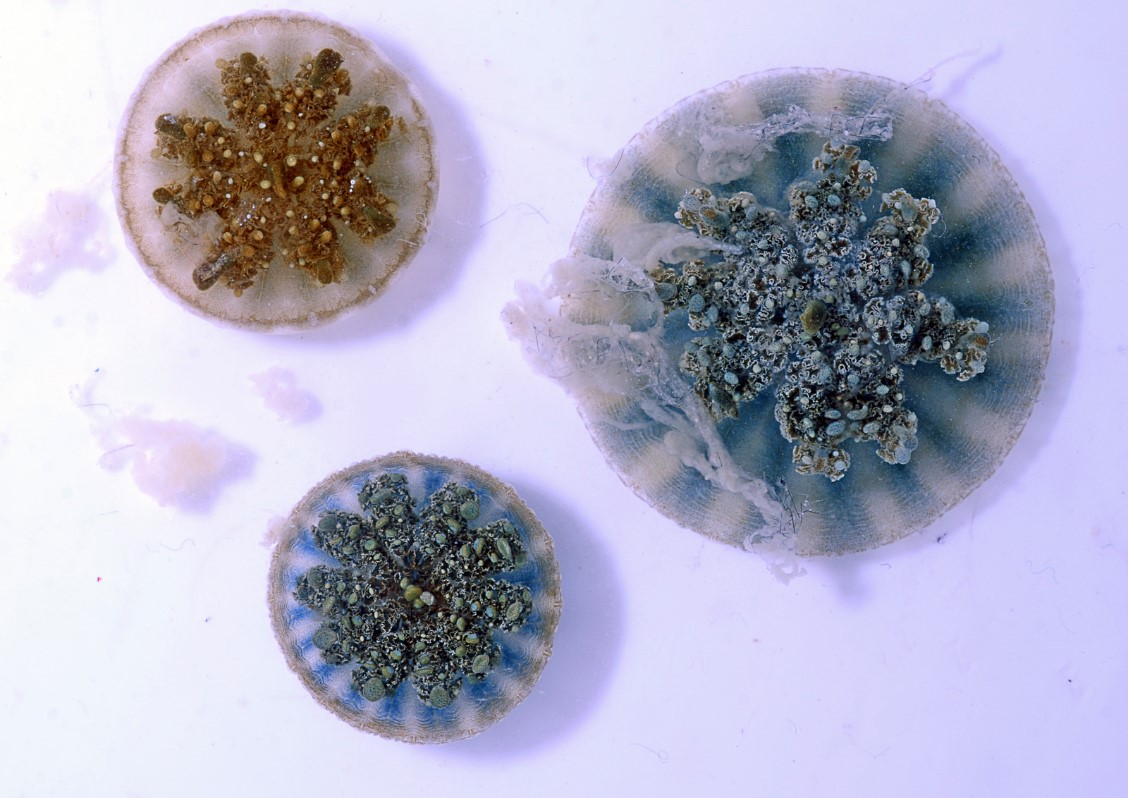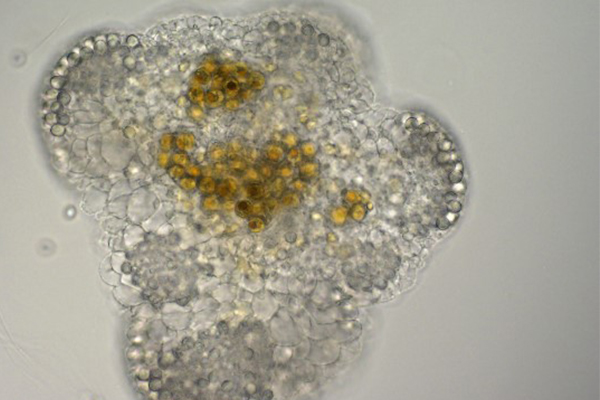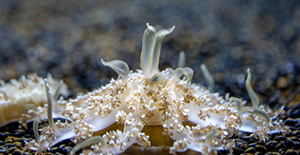Swimmers are advised to avoid waters containing large groups of Cassiopea, or upside-down jellyfish, since getting too close can lead to irritating stings, even without direct contact. This is because these placid-looking creatures release large amounts of mucus into the water, thereby resulting in the phenomenon known as stinging water.
Now, researchers have examined in detail the mucus stinging properties of Cassiopea jellyfish revealing gyrating balls of stinging cells called cassiosomes -- solving the mystery of stinging water.
Cassiopea jellyfish are unique in their appearance when compared to the iconic image of jellyfish, lacking the long, flowing tentacles. Instead, they lay upside down on the floor of shallow waters with their short oral arms facing upwards. They are commonly found in calm, sheltered warm waters such as lagoons and mangrove forests.

A team of researchers from the Smithsonian's National Museum of Natural History, the University of Kansas, and the US Naval Research Laboratory examined jelly-fish in their natural habitat in the waters of the Florida Keys mangrove forest along with lab-reared jellyfish. In both instances, the researchers observed large amounts of mucus being released into the surrounding water when prey or snorkelers came into proximity of the jellyfish.
The mucus can trap and kill prey even when not in direct contact with the jellyfish. Any unfortunate swimmer nearby is likely to be hit by one of these mobile grenades.
"The discovery was both a surprise and a long-awaited resolution to the mystery of stinging water," proclaimed Cheryl Ames, associate professor at Tohoku University and a Research Associate at the Smithsonian National Museum of Natural History. She added, "We can now let swimmers know that stinging water is caused by upside-down jellyfish, despite their general reputation as a mild stinger."

- Publication Details:
Title: Cassiosomes are stinging-cell structures in the mucus of the upside-down jellyfish Cassiopea xamachana
Authors: Cheryl L. Ames, Anna M. L. Klompen, Krishna Badhiwala, Kade Muffett, Abigail J. Reft, Mehr Kumar, Jennie D. Janssen, Janna N. Schultzhaus, Lauren D. Field, Megan Moroski, Nick Bezio, Jacob T. Robinson, Dagmar H. Leary, Paulyn Cartwright, Allen G. Collins & Gary J. Vora
Journal: Nature Communications Biology
DOI: 10.1038/s42003-020-0777-8
Contact:
Cheryl L. Ames (Profile)
Applied Marine Biology (AMB), Graduate School of Agricultural Science
Email: ames.cheryl.lynn.a1 tohoku.ac.jp
tohoku.ac.jp
Tel: +81-22-757-4178
Website: https://www.agri.tohoku.ac.jp/


